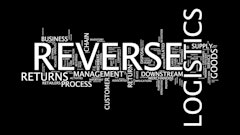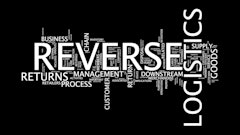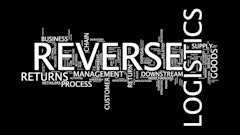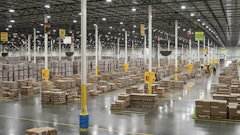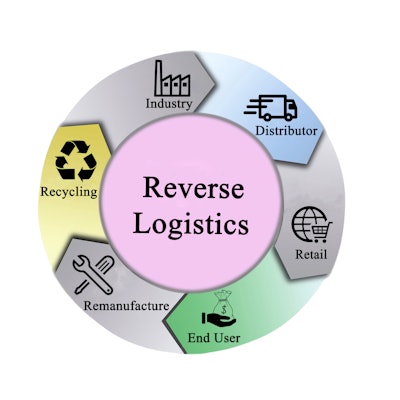
Modern commerce, whether business to consumer or business to business, relies on the accurate, timely and secure movement of goods—everything from raw materials to finished end-products. Today, we are experiencing an ever-increasing recognition of the vital and dynamic role of logistics as the lynchpin of—and tremendous contributor to—the global economy.
Along with great influence comes great responsibilities and business opportunities. Moreover, it is rewarding to witness the valuable role that our industry, especially reverse logistics, can play in reducing waste streams, energy conservation and environmental stewardship. While reverse logistics has been an important and growing business model for some time, the pandemic, with its manifold supply chain issues, brought about a new understanding of the connections of commerce, as well as the potential bottlenecks.
There are innovative and exciting trends occurring, and their implications for reverse logistics, in both e-commerce and the industrial sector, are ever increasing.
E-commerce
According to Capital One Shopping Research, an estimated 356 billion packages shipped worldwide in 2023; while projections indicate that 498 billion packages will ship in 2028. In 2022, U.S. parcels shipped at a rate of 64 packages per person, an increase by 73 percent from 2017, only 5 years earlier.
Of course, these parcels to households can contain everything from simple toys for our tots to high-end stereo systems, digital cameras or exercise equipment. This activity has also spawned an enormous return activity. Who isn’t familiar with printing off a pre-paid return merchandise shipping label.
There has to be a better way. Enter reverse logistics.
Certainly, in our experience, many merchants still relinquish interest in merchandise once it’s in the hands of the initial customer. However, we continue to see greater and greater desire to get sellable material back on warehouse shelves, especially for higher value consumer goods.
The reverse logistics entity can conduct a variety of services that include combinations of product inspection, refurbishing and repackaging, depending on actual condition and client standards and instructions; a kind of product triage. Reverse logistics operations can determine whether an item functions as intended, might function properly with minimal repair, or is not salvageable for resale. Similarly, some items can literally be restocked as is, or require minimal “buff and polish” or just repackaging. At other times, as with function, the cosmetic condition is not economically salvageable.
These assignments can develop through existing distribution relationships, where the outbound distributor creates a value-add service for its client; or initiated independently. Overall, we estimate that across all merchandise types about 80 percent of returned goods are or can be made fully fit for retail resale.
The resulting benefits for reverse logistics customers include less write-off of unsaleable merchandise and the ability to restock wholesale distributors at much less cost and more quickly, especially as so many U.S. products are sourced from overseas. Get those shelves restocked, so we can sell more goods.
For consumer products, refurbish and/or repack is becoming more prevalent for higher cost items. However, in time, expect this reverse “supply loop” to become prevalent across an even wider array of goods.
Industrial sector
Similar principles apply in many industrial sectors like the automotive industry with its complex supply chain of tiered suppliers, many of whom further serve each other. Additionally, some “parts” may be used to design, fashion or test the parts that actually go into finished vehicles.
Automobiles are one of the most, if not the most, complex manufactured mass products in the world and this web of relationships creates many opportunities for reverse logistics. For example, certain forgings and castings used in the automotive industry can be quite heavy and bulky; and sourced to the United States from overseas areas like India. Due to the weight, bulk and value of these forged or cast parts, it becomes an attractive proposition to inspect and refurbished rejected parts in the United States. Time is money in the just-in-time manufacturing world, not to mention the cost of shipping heavier parts well around the world, especially when air freight gets involved.
These services can range from predominantly cosmetic issues similar to what we often see with consumer products to flaws in these forgings and castings that may require additional machining. Each reverse logistics entity can determine its comfort level/degree of complexity of their services in this chain. In some cases, where heavier machining may be required, it may be practical to retain skilled trades specialists on an ad hoc basis for these assignments. Today, there is a wide range of reverse logistics specialists who do invest in the testing and operational equipment and skilled labor needed to repair technical parts of all kinds.
Value proposition
All logistics assignments involve the goal of achieving mutually beneficial relationships of trust and shared economic advantage. However, something more is taking place with the type of reverse logistics assignments we have discussed. We aren’t simply storing or routing something. With inspection, repair, cosmetic remedy and, even, repackaging, functions, the reverse logistics entity is taking responsibility, and becoming an active agent, in maintaining brand integrity and identity. Moreover, as with the example of an automotive supplier selling into the United States from overseas (or vice versa), the reverse logistics entity often becomes a full-fledged manufacturer’s representative.
Thus, we see how reverse logistics can grow out of existing logistics relationships and achieve more complex and more profitable business relationships. As the economic and other imperatives grow, this is an extremely fruitful area for business expansion.


![Pros To Know 2026 [color]](https://img.sdcexec.com/mindful/acbm/workspaces/default/uploads/2025/08/prostoknow-2026-color.mduFvhpgMk.png?auto=format%2Ccompress&bg=fff&fill-color=fff&fit=fill&h=100&q=70&w=100)




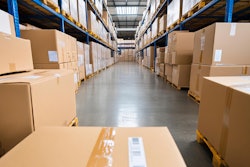
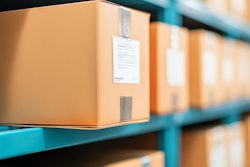

![Pros To Know 2026 [color]](https://img.sdcexec.com/mindful/acbm/workspaces/default/uploads/2025/08/prostoknow-2026-color.mduFvhpgMk.png?ar=16%3A9&auto=format%2Ccompress&bg=fff&fill-color=fff&fit=fill&h=135&q=70&w=240)
